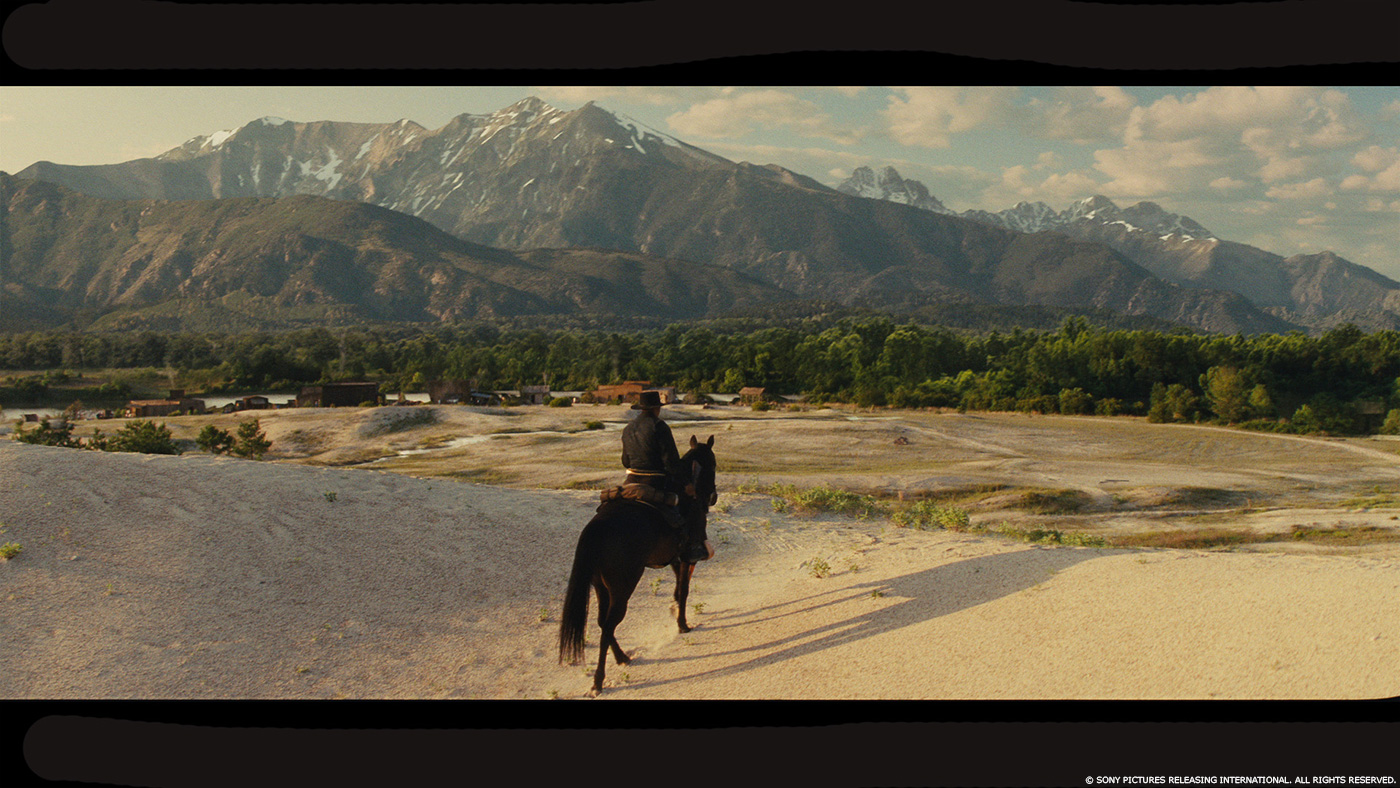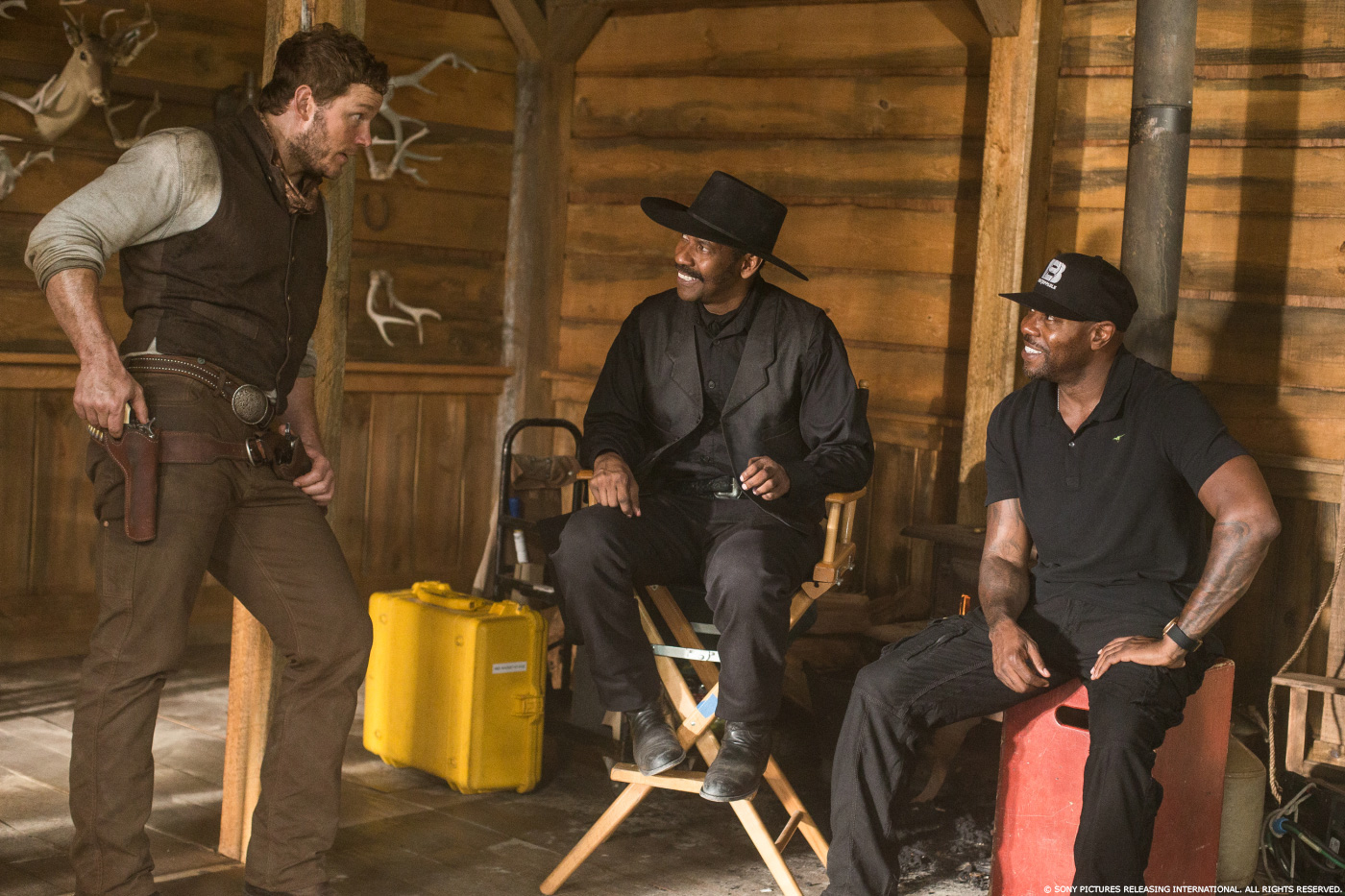Sean Devereaux founded Zero VFX with Brian Drewes in 2010. THE MAGNIFICENT SEVEN is his third collaboration with director Antoine Fuqua.
What is your background?
I’ve had the opportunity to work on upwards of 50 films. Today, I am lucky enough to be the Co-founder and Creative Director of ZERO VFX. I have always been passionate about telling stories, and this role affords me the opportunity to do that as well as help artists and filmmakers harness their talents to create work that matters.
How was this new collaboration with director Antoine Fuqua?
We’re lucky to have developed a strong relationship with Antoine Fuqua through our collaboration on SOUTHPAW and THE EQUALIZER. Working with a talented director who ‘gets’ visual effects is an important element in the filmmaker’s toolbox is rare and immensely beneficial. With that in mind, we jumped at the opportunity to work on another show with him!
What was his approach and expectation about the VFX?
It’s great – his approach to visual effects is, ‘I never want to see them, ever,’ which is our approach too, hence the name, ZERO VFX. We specialize in the invisible. A viewer’s inability to see our work is the the biggest compliment we can get.
How did you feel about working on the remake of a classic movie?
It has always been a dream to work on a Western, but as much as we appreciate the 1960s version of THE MAGNIFICENT SEVEN, SEVEN SAMURAI was our main source material.
A major focus for the team was to create something we felt was present in SEVEN SAMURAI, but was missing from the original version – a beautiful town worth fighting for.
We wanted viewers to immediately recognize the worth of Rose Creek, to fall in love with the quaint town and breathtaking scenery. Our goal was to help propel the story forward with these visuals, to provide opportunities for viewers to connect with the story and connect with Rose Creek’s inhabitants.
Can you describe a day during the preproduction, on-set and then during the post?
It was hugely helpful and cost effective to get involved as early as we were for THE MAGNIFICENT SEVEN. Our work on this show began when we received an early draft of the script.
From there, we were involved in the concept stage for Rose Creek and surrounding scenery, alongside Antoine and Derek Hill [Production Designer]. We also helped scout locations, specifically in finding a space in Baton Rouge, Louisiana to build Rose Creek.
Being on set was a blast. Obviously, this isn’t some heavily stylized sci-fi movie. It’s a grounded Western, so we shot on film with anamorphic lenses – the same way they used to shoot the Panavision Westerns back in the 50s and 60s. It was absolutely crazy, surreal at times – there were about 150 horses on set at any given time, and some days in excess of 300. It sounds like a nightmare logistically, but it really wasn’t, thanks to the crew. Those guys can’t get enough praise for their work on this movie. They’re true professionals.
How did you create the environment around the village?
We worked closely with the art director, Sean Ryan Jennings, from pre all the way through post.
We started from the ground up. Literally. We’d draw outlines of the landscape with pen and paper – « what if the peak did this? What if we had more snow here? » this continued with the development of Rose Creek.
In post, we kept Sean Jennings on board to ensure consistency and he worked directly with our Lead Environment Artist, Matt Freidlander, to create that vistas. Sean literally drew the plans for the town himself, so he knew how the look and feel was supposed to be.
Which references and indications did you receive from Antoine Fuqua for this environment?
We had hours of conversations where we explored movies, photographs, and documentaries. Antoine is an avid researcher and gave us boatloads of reference. The paintings of Thomas Moran were a big influence for the environment, the isolated town with a vast mountainous backdrop. The look was a mixture of, ‘the grand scale of Santa Fe in the bayou world of Baton Rouge.’ It was imperative for Antoine that we didn’t sacrifice the look of the film.
The movie has a lot of stunts. How did you collaborate with the stunt team?
This film has more horse-falls than any Western in the history of the world! There’s about 800 horse-falls – and believe it or not, all of the cast were on their own horses doing these stunts for real. No tricks there!
Which stunt was the most complicated to enhanced and why?
The FW, or First Wave sequence, was one of the most challenging. As the bad guys are riding into town, our heroes have dug trenches and covered themselves underground. As the riders approach, dynamite is set off all along the perimeter to stop the initial attack on the town. On set, real horses and riders were filmed with minimal and safe smoke bursts. We then digitally added the majority of explosions, using 3D volumetrics, flying chunks, debris, and dirt. There were a number of shots where the cameras were right in the middle of the chaos, making them more challenging, as we needed to sell a sense of danger and peril in an extreme way. The idea was to make the viewer feel that this location was the last place they’d ever want to be standing.
Chisolm does impressive stunts with his horse. Can you tell us more about that?
This will come as no surprise but Denzel Washington is the MAN! He rode his horse for hours every day. The entire cast spent hours and hours with their respective horses, in fact it was rare to see them walking around set without them. Very few digital tricks were used for the stunt work on the horse, it was always our preference to shoot the stunt and change the world around it rather than the other way around.
Let’s talk about explosions, can you tell us more about your work on them?
There were two types of explosion shots we developed. Some were seen from far away – both as they were going off, as well as when the clouds dissipated and drifted in the wind. The other style was the first person explosion with the camera inside. Both styles were created with 3D volumetrics, visually based on small samples that were shot on set.
For the wide shots, we made the renders appear very dense, with a strong sense of light and shadow. The speed had to feel violent, but still slow enough to sell the scale of dirt. Here, we added ground destruction that was both 3D simulated, as well as matte painted. We found that having subtle reactions on far away objects was key to the scale. Boards would rattle, and dust would fall from the roofs.
For the close up explosions, the outer shape of the mass was no longer important. Here, we needed to sell a high level of detail that included debris and particulate. The feeling of chaos was critical; we were able to sell this with speed. Multiple volumetric sims were combined with numerous layers of hard surface chunks and projectiles flying at camera and engulfing the riders in the plate.
How did you create and animate the CG knifes and arrows?
The arrows were all CG. It was decided that it would be easier to not have any representation of them on set, as this would predetermine too much. Creating the arrows and associated wounds entirely in CG, this gave the filmmakers the freedom to direct the exact timing and placement later in post. We modeled, textured, and lit the arrows based on practical props that were built, but any arrow leaving a bow or entering a target was created digitally.
Through this process, tracking the body movements of those wounded, particularly Horne in his death sequence, was probably the hardest part of the process. To look believable, we tracked the bodies exactly to lock the arrows to include all the subtleties of flinching muscles and moving clothes. The same level of attention to detail was needed to add wounds created in 3D and matte painting.
The research behind arrow hits was super in-depth – no pun intended. The team studied anatomy to figure out how arrows would react when stuck in a human body. It’s grisly work.
Did you need to remove anachronism elements from the shooting?
Yes! Despite the fact that the town was created entirely for the movie, we oftentimes removed visible production equipment – especially in wide establishing shots and those shot from a horseback. Although less exciting, this accounted for a huge amount of work.
How was your collaboration with the VFX supervisors at Zero VFX offices?
I was the overall VFX supervisor. LA & BOS had their own internal supervisors, Rob Nederhorst in LA and Dan Cayer in Boston. In addition to talking multiple times a week, we often called into each others’ dailies.
Are there any other invisible effects you want to reveal to us?
This was an incredibly VFX heavy show. We worked on every exterior shot, and once you see the film you’ll understand what that meant in terms of breadth of work.
We chose the name ZERO because we like to do invisible work, and I think the reason we’ve worked with Antoine so many times is he has the same sensibilities regarding VFX work.
What was the main challenge on this show and how did you achieve it?
We have these 900-frame shots that show the epic nature of the surroundings, and those are all tricky shots to get right when you don’t want the audience to know that’s what they’re looking at!
Was there any shots or a sequences that prevented you from sleeping?
Honestly? We all put in an awful lot of work every step of the way. This was a truly huge project for us. And visual effects are, I think, one of the most sensitive and rewarding parts of the filmmaking process. And ZERO is generally a senior, very elite team, and there’s way too much work in it not to have been the best of all of us.
How long did you work on this show?
We worked on THE MAGNIFICENT SEVEN for over a year. It was certainly a labor of love!
How many shots did you do?
We produced more than 900 shots for this movie. If you ask an audience member, I don’t think they would really be able to tell you what was done digitally… if anything, they’d ask how the arrows were put in the guy who died!
What was the size of your team?
Currently ZERO is over 80 producers and artists spread amongst both offices.
What is your next project?
We’re working on quite a few features at the moment– Denzel Washington’s FENCES, Kathryn Bigelow’s Untitled Detroit Project, and PATRIOTS DAY for Peter Berg, to name a few!
What are the four movies that gave you the passion for cinema?
THE WIZARD OF OZ, BACK TO THE FUTURE, ROCKY and FORREST GUMP in order of which I saw first. Each of these films has a strong visual aesthetic that enhances the story and the journey the characters go on. Although all very different films, they are each works of storytelling excellence that inspire me to this day.
A big thanks for your time.
// WANT TO KNOW MORE?
– Zero VFX: Official website of Zero VFX.
© Vincent Frei – The Art of VFX – 2016


























great interview.
Love the high res frames as well.
thanks